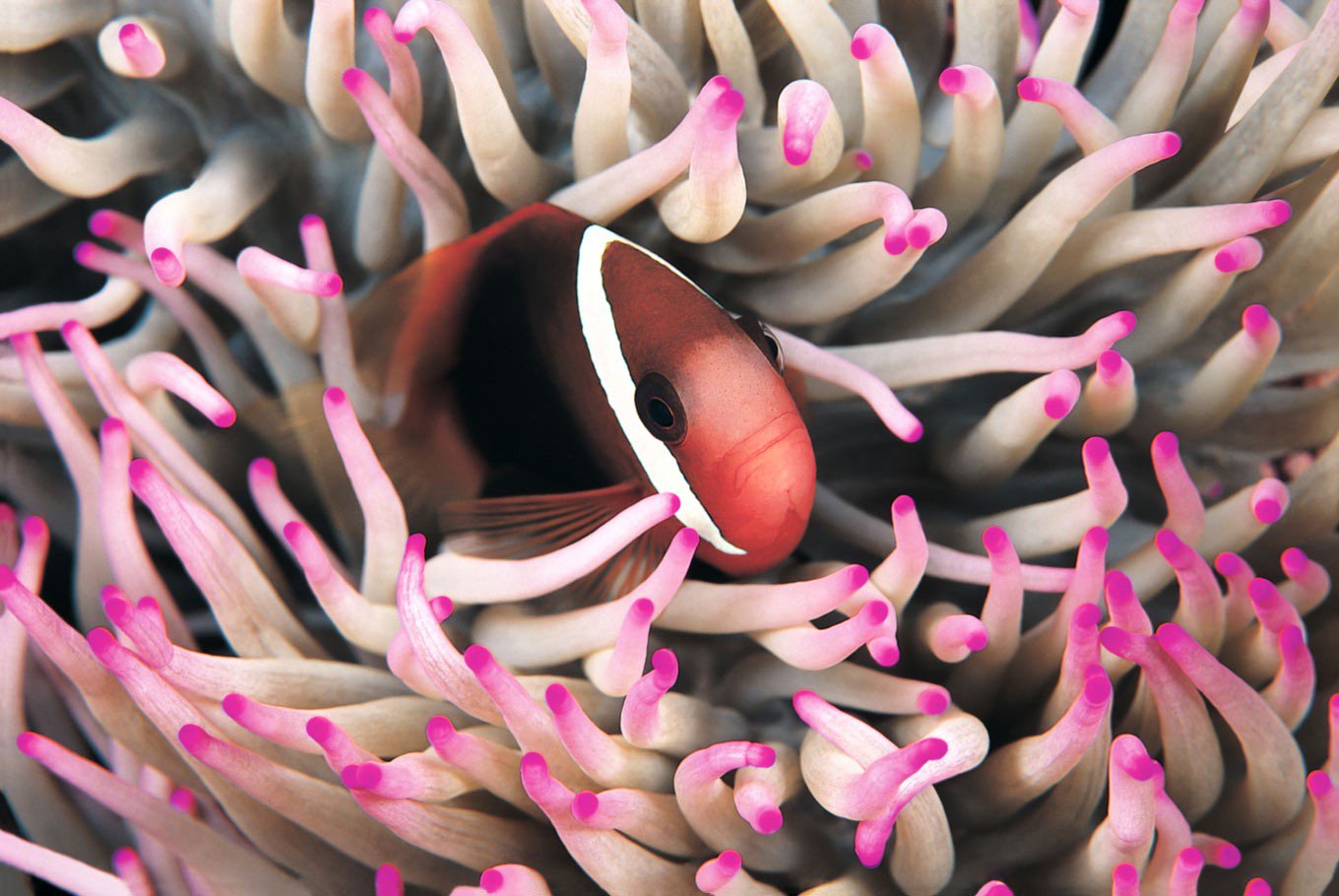Coral reef tourism has a global value of US$36 billion per year, according to a scientific study mapping the global value and distribution of coral reef tourism. This study, published in the Marine Policy journal in August 2017, concluded that 30 percent of the world’s reefs are valuable to tourism.
Indonesia has a thriving coral reef tourism industry and also has the second largest manta ray tourism industry in the world, with an annual value of over $15 million.
While coral bleaching events and ocean acidification are well-documented effects of climate change, there are other stressors upon coral reefs that could undermine these valuable tourism industries.
Sea level rises, leading to coastal erosion, plus stronger and more frequent storms typical of the current climate, smother and destroy coral reef structures. Heavy rainfall cause land-based pollutants and nutrients to wash into the ocean, resulting in algal blooms and a reduction in available light at reefs. Changing ocean currents also affect reefs, by altering the connectivity of geographically distant reefs and water temperature profiles. These changes can lead to a lack of food sources and interrupt reef species’ ability to breed.
If left unchecked, these complex effects could reduce the value of marine tourism significantly as the quality of world-class Indonesian dive sites and idyllic tourism destinations deteriorate.
Thankfully a new global partnership to conserve the ocean, announced at the World Economic Forum in Switzerland on Jan. 25, should help address this. This new partnership, Friends of Ocean Action, will consist of leaders in science, technology, business and non-governmental groups aiming to deliver the United Nations Sustainable Development Goal 14: to conserve and sustainably use the oceans, seas, and marine resources.
Individuals can also do their part to minimize the effects of climate change by reducing their carbon footprint. Measures such as driving less, reducing waste and purchasing energy efficient appliances or light bulbs are easy ways to help. Indonesia’s coral reefs can be protected with simple measures such as using fewer garden chemicals that may run-off into the ocean, choosing sustainable seafood and practicing good reef etiquette.
For those looking to experience and support the marine tourism industry of Indonesia, there are 11,000 uninhabited islands and a wealth of world-class dive sites to choose from. Visitors can support national marine parks directly by choosing responsible tourism operators and ensuring they pay their park fees. Marine park fees are crucial for minimizing the human impact on marine parks, including by providing local subsidies to preserve the reefs and by educating locals and tourists about reef conservation.
Komodo National Park
The Komodo National Park, within the Lesser Sunda Islands, is a UNESCO World Heritage Site and covers an area of over 1,700 square kilometers. It has been selected as one of the New 7 Wonders of Nature and its waters are rich with reef life and numerous fish species.
The park contains many small islands, providing a wide variety of dive sites, and water visibility of up to 30 meters.
It is a diver’s paradise of healthy reefs and currents that attract mantas, hammerheads, dolphins and mola mola. It is also a perfect destination for a cruise.
Raja Ampat Islands
Raja Ampat, or the Four Kings, is an archipelago of over 1,500 small islands and shoals just off the northwest tip of New Guinea.
It contains the Misool Marine Reserve and Cenderawasih Bay, the largest marine national park in Indonesia. It was declared the most biodiverse place in the world in 2002 and contains more than 500 coral species.
There are plenty of shark species, mantas, turtles and reef dives to enjoy at Raja Ampat and it is best accessed on an Indonesian liveaboard.
Wakatobi
Wakatobi in Southeast Sulawesi is a group of four remote islands in the Banda Sea and is a UNESCO Marine Biosphere Reserve that covers 13,900 sq km. It has been managed successfully as a reserve and, as a result, offers an exceptionally clear underwater environment.
New reefs have formed upon fossilized reefs and the lack of soil erosion provides visibility of up to a depth of 60 m. The fish and coral life are diverse and visitors can see pilot whales from November to March.
Bunaken National Park
Divers visiting Bunaken, in the Sulawesi Sea, can experience 70 percent of all fish species found in the Indo-Western Pacific Ocean. This marine national park has been so successful that many marine parks around the globe model their operations on those at Bunaken.
Five of the seven sea turtle species can be seen there, including the endangered green sea turtle. Dugong sightings are not rare and sperm whales are seasonal visitors in July and August.
It is one of the most diverse sites on Earth along with Raja Ampat.
Gili Islands
The three Gili Islands north of Lombok are well-known for their secluded beaches and healthy reefs. Gili Trawangan, Gili Meno and Gili Air are all within the Gili Matra Marine Natural Recreation Park. Motorized transport is not permitted on the islands and the pristine reefs are supported by mangrove forests.
The reefs have numerous shallow dives, suitable for experienced and beginners, and are home to a variety of colorful hard and soft corals. Reef sharks and manta rays can be enjoyed where the islands disappear into deep waters.
Source: The Jakarta Post | 2 February 2018














